
CANDELA 7300 Inspection Tool
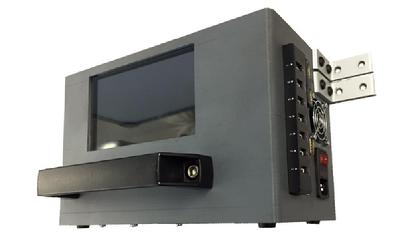
–Candela 7300 Inspection Tool (Candela 7300) is a device for performing the optical and electrical tests and can be incorporated to Ambient Fixture Tester;
–Candela 7300 is able to perform the next tests: CBCP (cd), CCT (K), u’v’, Load Power (W), Load Voltage (V), Load current (A), illuminance (lx) and to perform the morphological analysis of acquired images; –All parameters tested are set for Pass/Fail criteria with saving in spreadsheet report, and with saving of acquired images as a primary and as a morphologically processed sourced edges and baffled center beam of tested fixture.
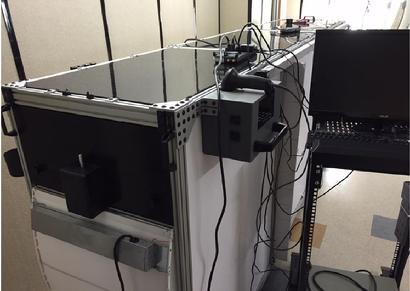
Candela 7300 can be incorporated to Ambient Fixture Tester for mass production
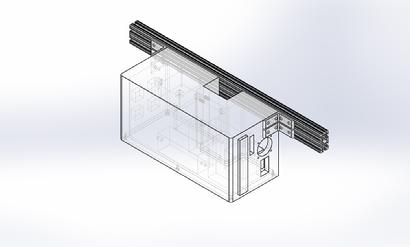
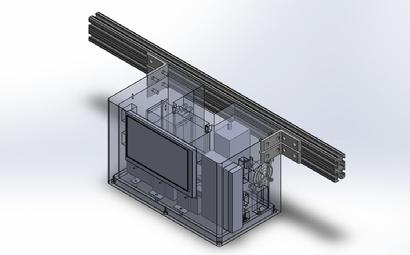
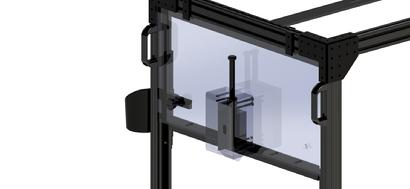
Clamps made from Delrin for smooth and reliable fastening
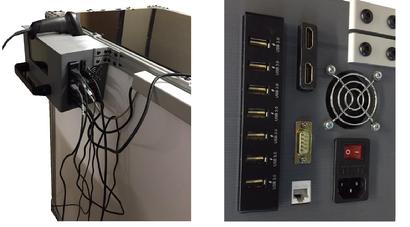
Candela 7300 is used with auto bar scanner for accurate and fast inventory control and database creation. USB3 hub is used to establish 15Gbit speed for image acquisition and all peripheral
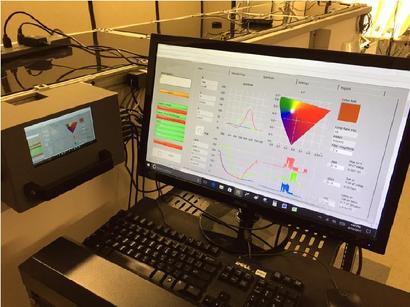
HMI as 7” monitor is improved for system control. Two HDMI ports are in use for extension
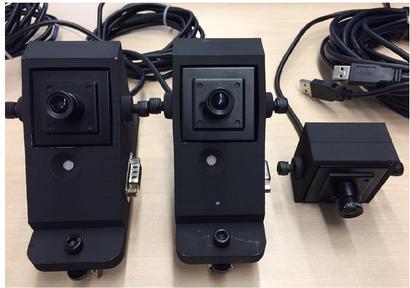
Cameras and Sensors designed in common case with established angle for stable acquisition.
Relative spectral response: Closely matches CIE Standard Observer curves x,y,z within 6% (fi’) of the CIE
spectral luminous efficency V(lambda)
Cosine response (f2) EV: Within 3%
Receptor: Silicon photocell
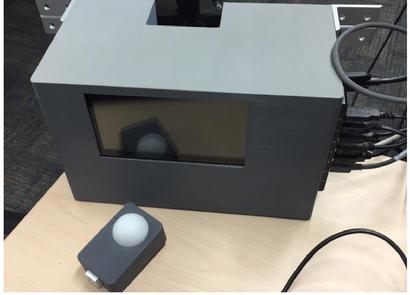
Separate sensors available threw serial interface
Measuring function Tristimulus values: XYZ
Chromaticity: vay; Ev u’v’; Ev, Dominant wavelength, Excitation purity
Correlated color temperature: EVTCpA u’v’; TCp(JIS method; available only with CL-S10w)
Color difference: delta(XYZ), delta(vay), delta(Evu’v’), deltaEVAu’v’
Other function: User calibration function, Data hold function, Mufti-point measurement (2 to 30 points)
Measuring range: 0.1 to 99,990 lx, 0.01 to 9,999 fcd (Chromaticity: 5 lx, 0.5 fcd or above) in four
automatically selected ranges (lx or fcd is switchable)
Accuracy: EV (Linearity): i2%i1digit of displayed value xy: 3:0.002
Repeatability: Ev: 0.5%+1digit (2zetta); xy: $0.0005
Temperature drift: Ev: +/-3% zidigit of displayed value, xy: +/-0.003
Humidity drift: Ev: +/-3% i1digit of displayed value, xy: +/-0.003
Response time: 0.5 sec. (continuous measurement)
Computer interface: USB
Display: 2-significant-digit LCD with back-light illumination
Operating temperature: -10 to 40°C, relative humidity 85% or less (at 35°C) with no condensation
humidity range.
Storage temperature: -20 to 55°C, relative humidity 85% or less (at 35°C) with no condensation humidity
range.
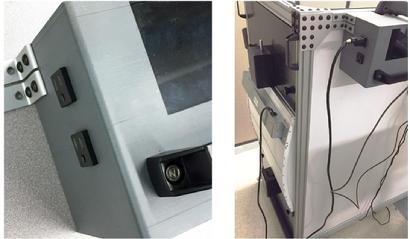
Fixture control equipped with two power supply sockets with common test power for precision metering in diapason of 20-100W
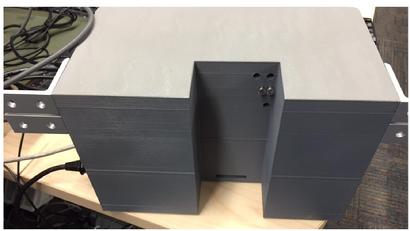
Computation capabilities determined by ATOM processor Quard core 1.84GHz CPU 500MHz GPU, 2/4G RAM DDRL3L, 32/62GB EMMC.The reset (right) and start (left) buttons located in a back slot.
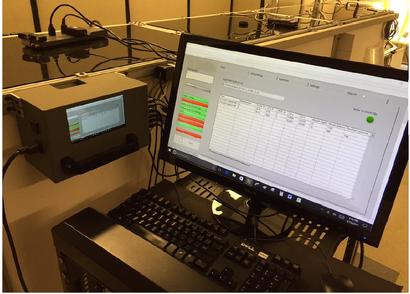
Software combines the complex acquisition and processing with math analysis and result calculation. Sample of “Report” GUI
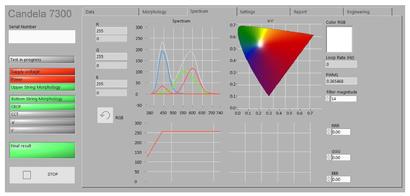
Dimming period (step) ( ti) depends on quantity of samples read with RGB sensors response time interval (i) that is 12us and determined by speed of acquisition ( si) that is 250kS/sec for 32 analog 16 bit channels (chRGB) and averaging of intensity required to eliminate the flicker effect( fUS):
[ ( ) ] sifchs tUSRGBiiµ1351= − =
Math model for moving system:
n I − 1 – Intensity for each RGB channel;
n – distance per step;
i i i t v n D = D – distance per interval;
i v – velocity;
i t – time per interval;
1 t – start of the interval;
2 t – end of the interval;
iNiiNii N i t v n n n n n n ∑ ∑= =D = D = D + D + D + D =1 13 2 1 ;∫ ∑ = D =¾® ¾ D210limtti itvdt t v ni;
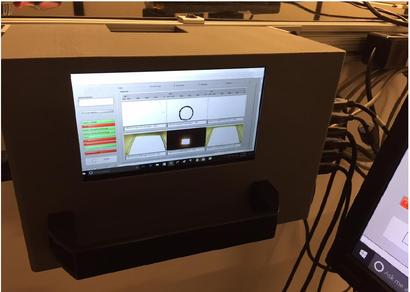
The light intensity (I) and color uniformity (CU) of LED light guide radiation points are required to be smooth correlated between each other during the dimming/lighting operation. LAT-001 is pointed to detect bad LEDs in string of 2’x2′ fixture.